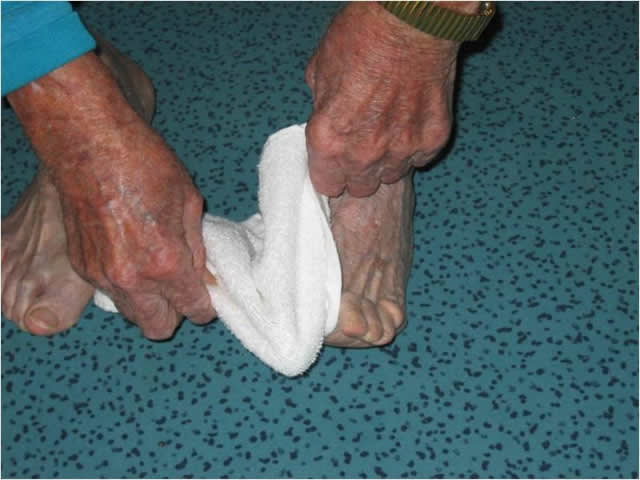Glossary
Links
Resources
1B: Prevention
Now that you have a better understanding of how to assess the skin, you are ready to learn more about assessing and managing conditions such as skin tears, leg ulcers, diabetic foot ulcers and pressure injuries. This is covered in Modules 2 to 6.
However, first there are some simple and effective strategies you can use to care for skin and prevent many skin problems from occurring. These strategies are based on current best evidence.
| Strategy | Explanation |
| Assess a client’s skin regularly | This enables you to put in place and evaluate correct and suitable preventive measures. |
| Use emollient soap substitutes for washing or cleansing | This reduces the drying effects of soap and water. Emollients restore the natural barrier function of the skin by replacing lost water and provide a protective film over the surface of the skin. Emollients include creams, ointments, lotions, bath oils and soap substitutes. |
| Avoid products that may irritate the skin | Products such as perfumes, bubble baths and talcum powder can irritate the skin and cause itching or discomfort. |
| Dry the skin thoroughly | Drying should involve a light patting rather than rubbing as rubbing may lead to abrasion and/or weakening of the skin. If skin is left damp, it is vulnerable to excess drying from the environment and at risk of fungal and bacterial contamination. IMAGE - M1 09 Drying between toes |
| Apply a pH neutral moisturiser and/or barrier cream at least twice daily | This will help to prevent dry skin. A pH neutral moisturiser is one that is neither acid or alkaline. It has a pH between 6.5 and 7.5. A barrier preparation can be a cream, ointment or spray which contains substances that repel water such as silicone or zinc oxide. |
| When applying moisturiser and/or barrier cream, follow the direction of body hair and gently smooth into the skin | Rubbing can cause irritation. Rubbing moisturiser against the direction of hair growth increases the risk of an infection occurring in the hair follicles. |
| Encourage clients to wear loose, cotton clothing where possible | This helps the skin to breathe better and reduces the risk of sweating from nylon fabrics. The use of limb protectors can also protect fragile limbs. |



